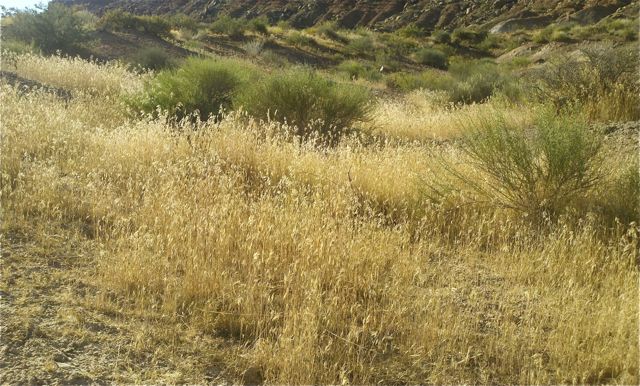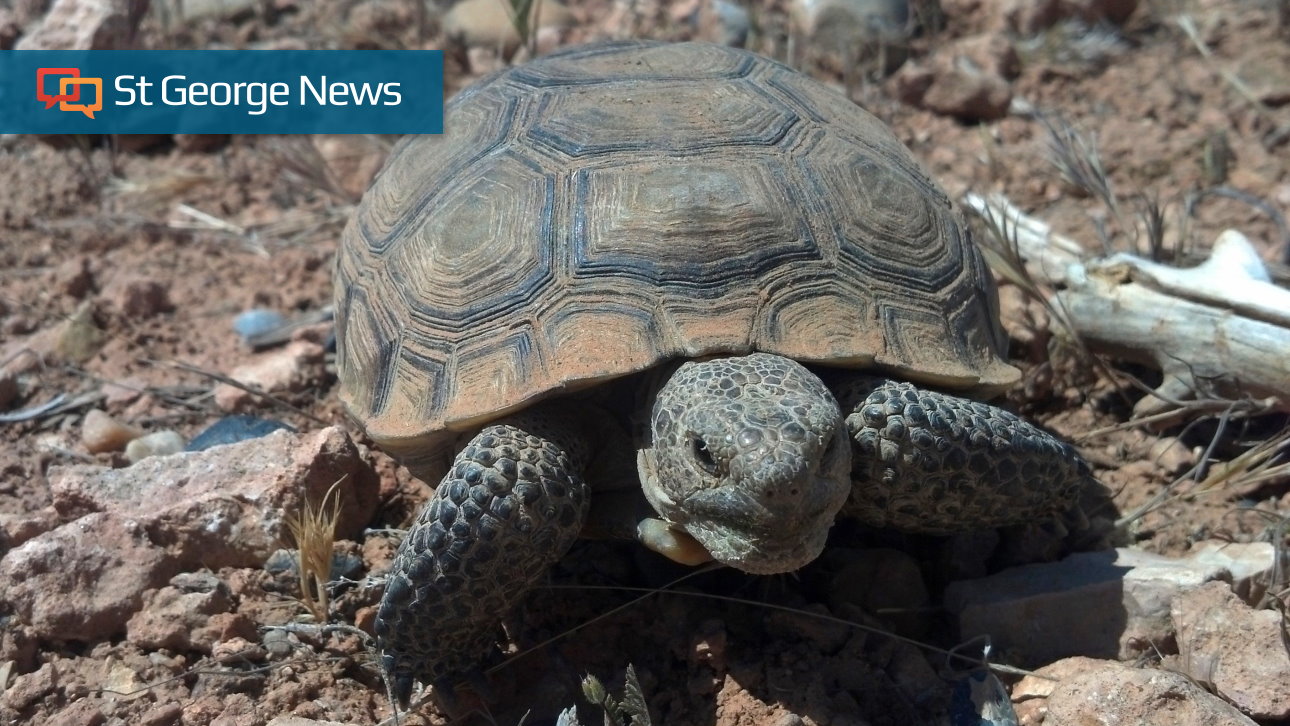
ST. GEORGE — A state fire official warned the Washington County Habitat Conservation Plan Advisory Committee of a potentially heavy fire season in the wake of a particularly wet winter and subsequent downpours.

During a meeting of the HCP committee Tuesday, Mike Melton, the fire manager for five southwest Utah counties for the Utah Division of Forestry, Fire and States Lands, gave a projected outlook for the area’s fire season and conditions potentially running through July.
The fire outlook was created by Predictive Services, part of the National Interagency Coordination Center.
Thanks to a winter with an above average snowpack, as well as late-season snowfall in higher elevations and rainfall below that, Washington County has become very green and very susceptible to wildfires.
While it can take certain vegetation weeks or months to sufficiently dry out from the heavy precipitation the region has experienced – and may continue to in various degrees into June, Melton said – particular grasses, such the invasive cheatgrass, dry quickly and burn fast.
Melton said he isn’t worried now about vegetation at elevations of 4,500 feet and above because that is where the wet vegetation is.

“Right now those grasses (below 4,500 feet) are ready to go,” he said. “That encompasses a great portion of the (Red Cliffs Desert) Reserve.”
Wildfires in the desert reserve are a major concern to members of the HCP committee after large fires in 2005 and 2006 destroyed 25% of the Mojave desert tortoise habitat within the Red Cliffs Desert Reserve, which decimated the reserve’s tortoise population by 50%.
The reserve was specifically set aside over 20 years ago for the preservation of the species, which is currently listed as threatened under the Endangered Species Act. The reserve itself is overseen by the HCP advisory committee which is composed of local, state and federal officials.
To fight the invasive grasses, federal and state agencies have tried to curtail the spread of the invasive and highly combustive vegetation plaguing the reserve. In recent years that has included using goats to eat the cheatgrass along Cottonwood Road, which runs through part of the reserve.

Read more: BLM proposes new herbicides to kill off invasive grasses choking wildlands, fueling fires
“If we don’t go after those fuels aggressively, we’re going to have quite a problem,” Milton said.
With temperatures expected to start rising in the next week or so, the threat of fire within the reserve and county in general will rise, he said.
One wildfire already occurred in the reserve earlier this week due to a campfire that got out of the hand. Fire crews quickly extinguished it before it spread. The individuals who started the fire were cited by law enforcement.
Read more: Campfire sets off blaze in Red Cliffs Reserve, ushering in potentially busy wildfire season
Another fire occurred Sunday in Hurricane near Sky Ranch, Melton said. That wildfire grew to 121 acres before it was put out by fire crews.
In addition to runaway campfires, debris burning is one of the biggest culprits for starting wildfires, Melton said. Fires triggered by firearms use is also a concern, yet isn’t the easiest thing to restrict, he said.
In addition to the threat of human-caused fires, Melton said fires triggered by lightning are another concern.

Lightning-caused fires could take place in July depending upon how the monsoon season shapes up in the wake of El Nino weather patterns, he said.
When asked by a committee member if the state will enact fire restrictions on the region soon, Melton said he does his best to be timely but added it’s also not as simple as one would think.
“The public gets confused if we don’t add everything together,” Melton said, referring to all the differing locations and jurisdictions where fire restrictions can apply.
While Utah may issue fire restrictions for state-owned and unincorporated private lands, there may be a different, albeit similar, set of restrictions issued separately for federal lands like national parks, monuments and forests.
Not all fire restrictions are issued at the same time.
Read more: ‘If it can spark, it can cause a fire’: Tips on preventing human-caused wildfires
Melton said he didn’t believe fire restrictions would be needed for the higher-elevation areas as much as for the lower elevations.
“We’re going to have to be creative with (the fire restrictions),” he said, “because some people just don’t get it.”
One of the measures considered by the HCP committee to help prevent fires on the reserve is to install more signage reminding people of the fire danger.
Individuals who are found to have started wildfires are subject to criminal penalties, as well as large fines and financial restitution that can include the cost of fire suppression.
So far neither state or federal agencies have issued any fire restrictions.
Email: [email protected]
Twitter: @MoriKessler
Copyright St. George News, SaintGeorgeUtah.com LLC, 2019, all rights reserved.